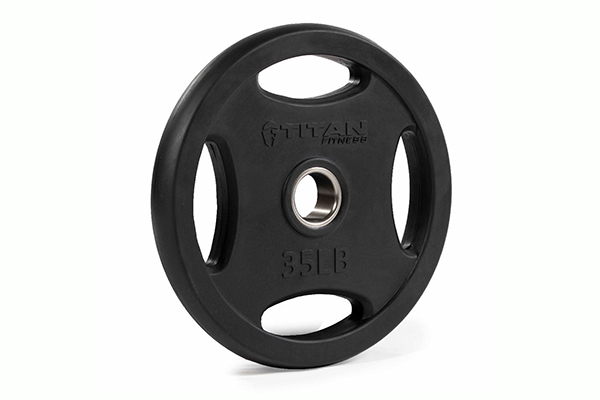When it comes to strength training and fitness equipment, weight plates are some of the most essential tools you’ll find in a gym. Whether you’re performing bench presses, squats, deadlifts, or Olympic lifts, weight plates allow you to overload your muscles and track your training progress progressively. While 45 lb plates are the most common in gyms, 35 lb weight plates also play an important role for lifters. One question many people ask is: What size are 35 lb weight plates? The answer depends on the type of plate and its design, but there are general industry standards worth understanding.
Standard vs. Olympic Plates
Before diving into the actual dimensions, it’s important to distinguish between standard plates and Olympic plates.
-
Standard Plates typically have a 1-inch diameter center hole and are often used with lighter, less expensive barbells.
-
Olympic Plates have a 2-inch diameter center hole and are designed to fit Olympic barbells, which are stronger and can hold more weight.
Most commercial gyms use Olympic plates, so when people refer to a 35 lb plate, they usually mean an Olympic-sized version.
Typical Dimensions of 35 lb Weight Plates
The physical size of a 35 lb plate varies depending on the brand and type of plate, but there are general measurements you’ll commonly see:
-
Diameter
-
A 35 lb Olympic plate usually has a diameter of around 14 to 17 inches (35–43 cm).
-
Unlike 45 lb plates, which are standardized to about 17.7 inches (450 mm) in diameter for competition, 35 lb plates can be smaller and vary more widely.
-
-
Thickness
-
A 35 lb plate typically measures about 1.25 to 1.75 inches (3–4.5 cm) thick.
-
Rubber-coated or bumper-style plates may be thicker than cast-iron plates.
-
-
Center Hole
-
For Olympic plates: about 2 inches (50 mm).
-
For standard plates: about 1 inch (25 mm).
-
-
Shape and Design
-
Some plates are flat and circular, while others have grip handles or contoured edges for easier lifting and loading.
-
Rubber bumper plates are designed to be dropped safely and are often uniform in diameter, even for lighter weights, which means a 35 lb bumper plate might be the same diameter as a 45 lb bumper plate, just thinner.
-
Different Types of 35 lb Weight Plates
Not all 35 lb plates are created equal. Here are the main categories you’ll encounter:
-
Cast Iron Plates: Traditional, solid iron, durable, and usually the thinnest option.
-
Rubber-Coated Plates: Iron core with rubber coating for noise reduction and floor protection.
-
Bumper Plates: Made mostly of dense rubber, all bumper plates (including 35 lb ones) generally have a diameter of 17.7 inches (450 mm) to meet Olympic lifting standards.
-
Grip Plates: Plates with cutout handles, making them easier to carry and load.

Why 35 lb Plates Are Useful
While 45 lb plates dominate most gyms, 35 lb plates provide some unique advantages:
-
Intermediate Weight Jumps – If you’re progressing gradually, jumping from 25 lb plates to 45 lb plates may be too large an increase. A 35 lb plate offers a middle ground.
-
Barbell Balance – They allow for smoother weight distribution when exact loads are needed.
-
Accessory Work – Many lifters use 35 lb plates for exercises like shrugs, weighted carries, or plate presses, where the size and grip make them versatile.
Things to Consider When Buying 35 lb Plates
If you’re looking to purchase 35 lb plates for a home gym, consider the following factors:
-
Compatibility: Ensure the plate hole matches your barbell (1-inch vs. 2-inch).
-
Durability: Cast iron is long-lasting, while bumper plates are safer for Olympic lifting.
-
Space: Thinner plates allow you to load more weight on the bar, while thicker plates may fill the sleeve quickly.
-
Price: Weight plates are often sold per pound, with rubber-coated and bumper plates typically costing more than plain iron.
Conclusion
So, what size are 35 lb weight plates? In general, Olympic-style 35 lb plates measure around 14–17 inches in diameter and about 1.25–1.75 inches thick, though bumper versions match the standardized 17.7-inch diameter of competition plates. The exact size will depend on whether the plate is cast iron, rubber-coated, or a bumper plate. Regardless of the design, 35 lb plates are an important addition to any gym setup, providing versatility, incremental loading, and balance in strength training programs.
Post time: 08-19-2025



